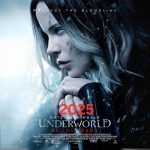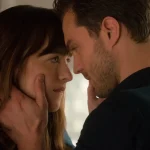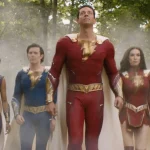Harry Potter and the Philosopher’s Stone (2001)

Harry Potter and the Philosopher’s Stone (2001) – A Magical Beginning to a Legendary Saga
Introduction
Harry Potter and the Philosopher’s Stone (2001) is the film that launched one of the most beloved franchises in cinematic history. Directed by Chris Columbus and based on J.K. Rowling’s bestselling novel, this adaptation brings the magical world of Hogwarts to life, introducing audiences to Harry Potter (Daniel Radcliffe), Hermione Granger (Emma Watson), and Ron Weasley (Rupert Grint) as they embark on their first year at the Hogwarts School of Witchcraft and Wizardry.
With a perfect blend of adventure, fantasy, and heart, The Philosopher’s Stone immerses viewers in a world of magic, friendship, and destiny. From Diagon Alley to the Sorting Hat ceremony and the epic final showdown with Voldemort’s spirit, the film is packed with unforgettable moments that set the foundation for the saga.
In this in-depth review, we will analyze Harry Potter and the Philosopher’s Stone‘s plot, themes, performances, cinematography, special effects, cultural impact, and why it remains a timeless classic.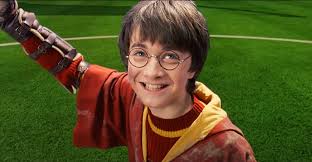
Plot Summary: The Boy Who Lived Begins His Journey
1. The Discovery of Magic
Harry Potter, an orphan raised by his cruel aunt and uncle, the Dursleys, discovers on his 11th birthday that he is a wizard. Hagrid (Robbie Coltrane), a half-giant, delivers this life-changing news, revealing that Harry’s parents were murdered by Lord Voldemort, the dark wizard who mysteriously disappeared after failing to kill baby Harry.
2. Hogwarts and New Friendships
Harry arrives at Hogwarts, where he is sorted into Gryffindor House alongside his new best friends, Ron Weasley and Hermione Granger. They quickly form a bond while exploring the wonders of the castle, including enchanted staircases, moving portraits, and the school’s many magical secrets.
3. The Mystery of the Philosopher’s Stone
Strange occurrences lead Harry, Ron, and Hermione to suspect that something valuable is hidden within the castle. Their investigations uncover the Philosopher’s Stone, a magical artifact capable of granting immortality. They learn that someone—possibly Professor Snape (Alan Rickman)—is trying to steal it.
4. The Final Challenge and Confrontation with Voldemort
Braving a series of magical obstacles—including a giant three-headed dog (Fluffy), a deadly game of chess, and a riddle of potions—Harry reaches the final chamber, where he confronts Professor Quirrell, who is secretly hosting Voldemort’s weakened spirit. With courage and an unexpected magical defense from his mother’s love, Harry prevents Voldemort from returning, securing the Philosopher’s Stone’s destruction.
5. The End of Year Feast and a New Beginning
Hogwarts House points are awarded, with Gryffindor emerging victorious. As Harry returns to the Dursleys for the summer, he realizes that Hogwarts is his true home, setting the stage for his continued journey.
Themes: Friendship, Destiny, and the Battle Between Good and Evil
1. The Power of Friendship
Harry, Ron, and Hermione’s friendship is the emotional core of the film. Each character brings unique strengths to the group—Harry’s bravery, Hermione’s intelligence, and Ron’s loyalty—showing that teamwork and trust are essential for overcoming challenges.
2. The Fight Between Good and Evil
From the start, Harry represents the light fighting against darkness. Voldemort, even in his weakened form, symbolizes pure evil, while characters like Dumbledore (Richard Harris) and Hagrid serve as guiding forces in Harry’s journey toward becoming a hero.
3. The Importance of Choices
Dumbledore’s wisdom about “It is our choices that show what we truly are, far more than our abilities” is a key theme. Harry’s decision to reject power and embrace kindness defines his character and sets the moral foundation for the series.
4. The Power of Love and Sacrifice
Harry’s survival against Voldemort is due to his mother’s sacrifice, emphasizing the film’s core message that love is the most powerful magic of all.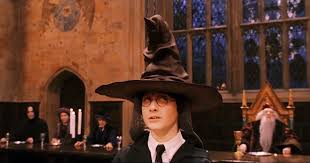
Character Analysis: A Perfectly Cast Ensemble
1. Harry Potter (Daniel Radcliffe)
Daniel Radcliffe’s portrayal of Harry captures the innocence, curiosity, and quiet strength of the character. As a newcomer to the wizarding world, Harry’s wide-eyed wonder mirrors that of the audience, making him the perfect protagonist for this magical adventure.
2. Hermione Granger (Emma Watson)
Emma Watson embodies Hermione’s intelligence, confidence, and unwavering dedication to knowledge. Her performance sets Hermione up as one of the strongest female characters in fantasy cinema.
3. Ron Weasley (Rupert Grint)
Rupert Grint’s natural comedic timing makes Ron the perfect contrast to Hermione’s seriousness. His moments of bravery, such as during the wizard’s chess game, prove that he is much more than comic relief.
4. Professor Dumbledore (Richard Harris)
Richard Harris’ portrayal of Albus Dumbledore is warm and wise, making him the perfect mentor figure. His calm demeanor and deep understanding of magic make him one of the most beloved characters in the series.
5. Professor Snape (Alan Rickman)
Alan Rickman’s performance as Severus Snape is one of the film’s highlights. His cold, menacing presence creates immediate tension, making audiences suspect him as the villain—only for later films to reveal his deeper complexity.
6. Hagrid (Robbie Coltrane)
Hagrid serves as Harry’s first true friend and protector. His kindness and humorous dialogue make him one of the most endearing characters in the series.
Cinematography and Visual Effects: Bringing Magic to Life
1. Hogwarts: A Breathtaking Fantasy Setting
The cinematography captures the grandeur and wonder of Hogwarts, with stunning castle shots, detailed set designs, and floating candles in the Great Hall.
2. Spellbinding Special Effects
From flying broomsticks in Quidditch matches to the eerie mirror of Erised, the film’s CGI and practical effects hold up remarkably well, making the world feel immersive and believable.
3. John Williams’ Magical Score
The iconic Hedwig’s Theme remains one of the most recognizable musical scores in cinema history. Williams’ compositions perfectly capture the film’s sense of adventure, wonder, and danger.
Cultural Impact and Legacy
1. The Beginning of a Global Phenomenon
With a worldwide gross of $975 million, Harry Potter and the Philosopher’s Stone became the highest-grossing film of 2001 and launched an eight-film franchise that defined a generation.
2. The Rise of Harry Potter Fandom
- The film helped expand the Harry Potter fandom, leading to theme parks, merchandise, and spin-off films (Fantastic Beasts series).
- Quotes like “You’re a wizard, Harry” and “It does not do to dwell on dreams and forget to live” became pop culture staples.
3. Lasting Influence on Fantasy Films
Harry Potter and the Philosopher’s Stone set new standards for book-to-film adaptations, influencing later fantasy franchises like The Hunger Games and Percy Jackson.
Box Office and Critical Reception
- Box Office: $975 million worldwide
- Rotten Tomatoes Score: 81% (Critics), 82% (Audience)
- Academy Award Nominations: Best Art Direction, Best Costume Design, Best Original Score
Critics praised its faithful adaptation, stellar cast, and world-building, though some noted its lighthearted tone compared to later, darker installments.
Why Harry Potter and the Philosopher’s Stone Remains a Classic
✔ A faithful adaptation that stays true to the magic of the book
✔ Perfect casting, bringing J.K. Rowling’s characters to life
✔ Stunning visual effects that hold up decades later
✔ A timeless story about friendship, bravery, and self-discovery


